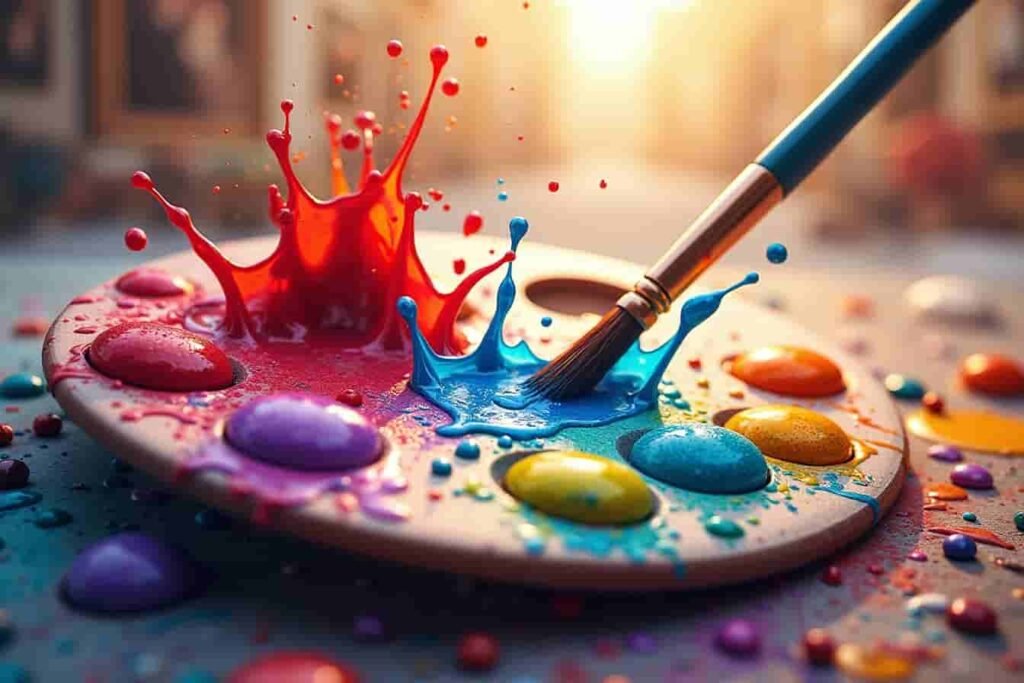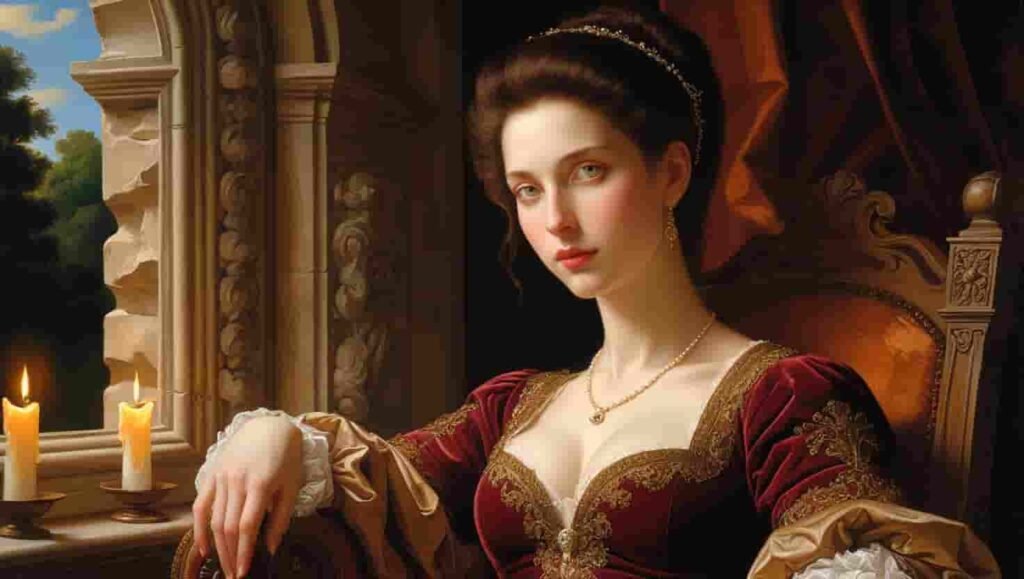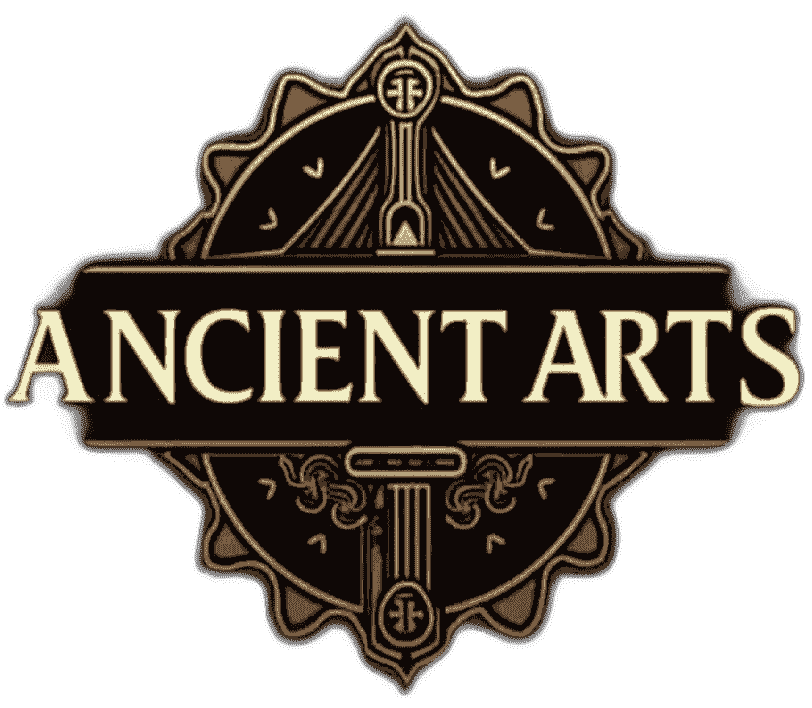Introduction: The Living Spirit in Stone
Ancient Egyptian civilization stands as a testament to humanity’s enduring quest to bridge the physical and spiritual realms. At the heart of this remarkable culture lies a profound creation: the Ka statue. These extraordinary sculptures served as eternal vessels for the spiritual essence of both royalty and common people alike. Through masterful craftsmanship and deep spiritual significance Ka statues embodied the ancient Egyptian belief in eternal life and the complex nature of the human soul.
The Essence of Ka: Understanding the Spiritual Foundation
The Concept of Ka in Ancient Egypt’s people Belief
The ancient Egypt’s people viewed the soul as a multifaceted entity. The Ka represented the life force or spiritual double that existed alongside the physical body. This vital essence required sustenance and care even after death. Ka statues provided a permanent dwelling place for this spiritual force ensuring the deceased’s continued existence in the afterlife.
Spiritual Functions and Ritual Significance
- Eternal Dwelling: Ka statues served as permanent homes for the spiritual essence
- Offering Reception: These vessels received daily offerings of food and drink
- Divine Connection: They facilitated communication between the living and the deceased
- Eternal Memory: Preserved the identity and likeness of the individual
- Ritual Focus: Provided a focal point for mortuary ceremonies and prayers
Notable Ka Statues Through History
The Ka Statue of Khafre
The Ka statue of Khafre represents the pinnacle of royal sculpture during the Old Kingdom period. Created from solid diorite this masterpiece showcases:
- Perfect symmetrical proportions following canonical rules
- Integration of the protective Horus falcon
- Exceptional preservation of surface detail
- Masterful handling of extremely hard stone
- Religious and political symbolism in perfect harmony
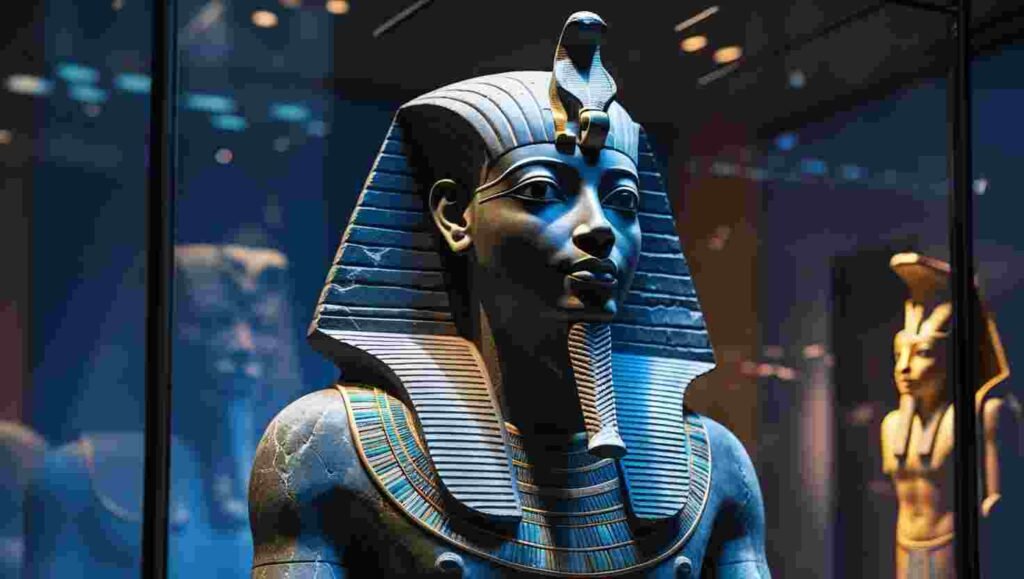
The Ka-aper Statue (Sheikh el-Balad)
This remarkable wooden statue represents one of the finest examples of non-royal Ka statues:
- Extraordinary preservation of cedar wood
- Lifelike features capturing individual character
- Crystal-inlaid eyes creating vivid expression
- Natural stance suggesting living presence
- Detailed rendering of clothing and accessories
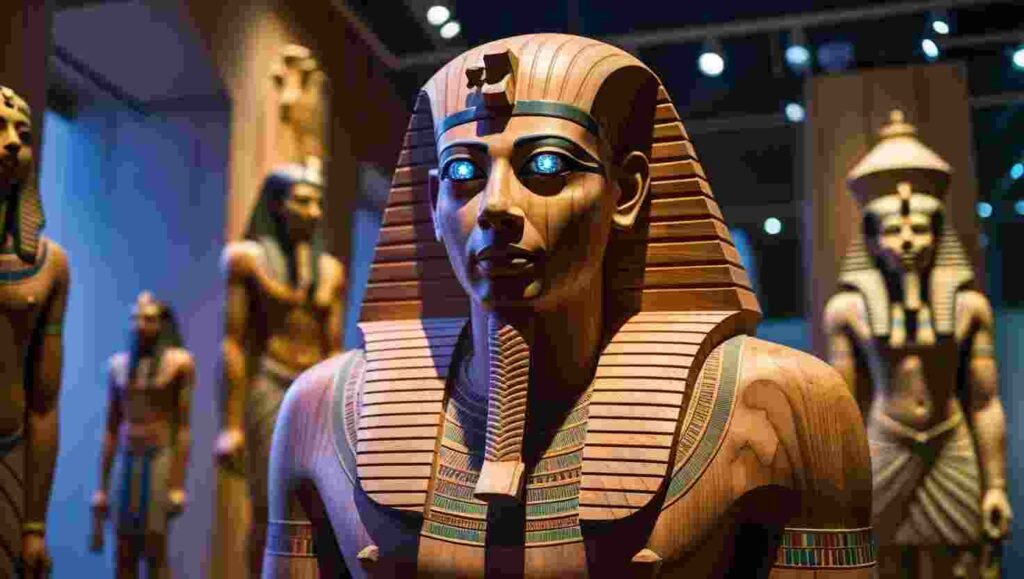
The Ka Sculptures of King Hor
The Ka statue of King Hor demonstrates unique characteristics:
- Blend of idealized and personal features
- Intricate royal regalia details
- Multiple ritual inscriptions
- Evidence of active worship practices
- Historical significance in understanding royal portraiture
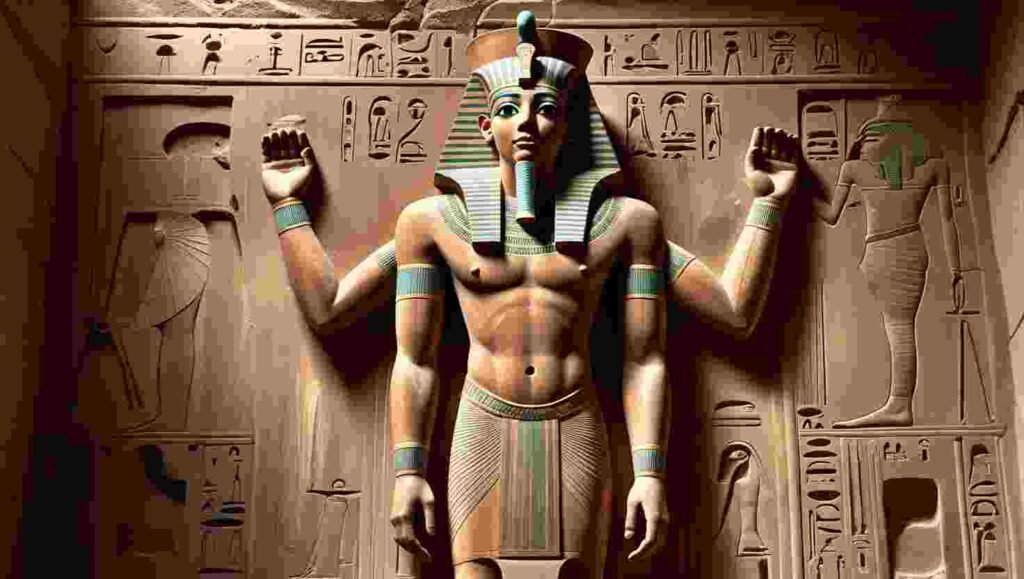
Technical Mastery and Creation Process
Materials and Craftsmanship Matrix
| Material | Common Usage | Advantages | Notable Examples |
|---|---|---|---|
| Limestone | Common statues | Readily available local material | Many tomb statues |
| Diorite | Royal statues | Extremely durable | Khafre Ka statue |
| Wood | Elite statues | Allows fine detail | Ka-aper statue |
| Granite | Monumental works | Eternal durability | Royal Ka statues |
| Quartzite | Special commissions | Symbolic solar connection | Select pharaonic pieces |
Famous Ka Statues in Ancient Egypt
Several notable Ka statues have survived, providing insight into Egyptian funerary art. Some of the famous examples include:
| Ka Statue Name | Description | Material Used | Current Location |
| Ka Statue of Khafre | Depicts Pharaoh Khafre seated with the protective falcon of Horus behind him | Diorite | Egyptian Museum, Cairo |
| Ka-Aper Statue | A well-known wooden statue of a priest with strikingly realistic eyes | Wood with rock crystal and copper inlays | Egyptian Museum, Cairo |
| Ka Statue of King Hor | A rare statue showing King Hor in a standing posture with divine symbols | Limestone | Louvre Museum, Paris |
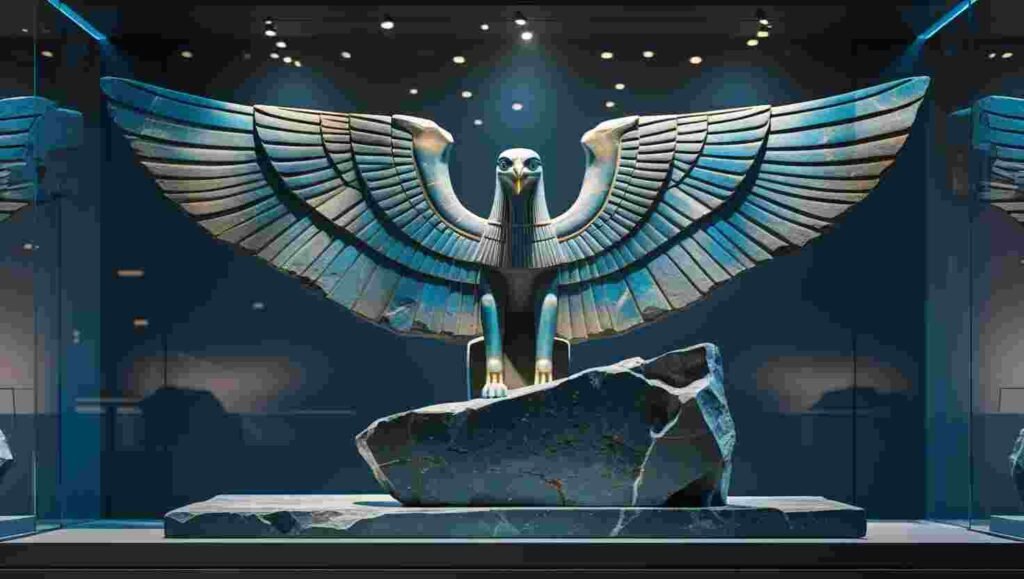
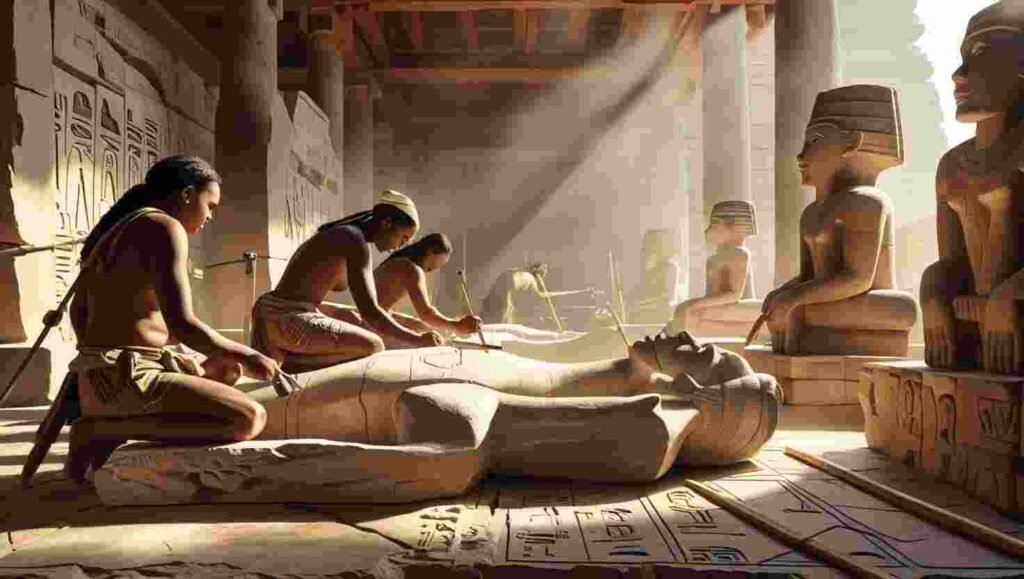
Construction Techniques and Artistic Standards
1 The Initial Planning Phase
- Selection of appropriate stone or wood
- Preparation of surface and tools
- Application of grid system
- Preliminary sketching of features
- Establishment of proportions
2 The Carving Process
- Rough blocking of basic forms
- Refinement of major features
- Detail work on face and regalia
- Surface smoothing and polishing
- Final detailing and inscription
3 Finishing and Installation
- Application of paint and gilding
- Installation in tomb or temple
- Ritual consecration ceremonies
- Positioning for optimal ritual use
- Integration with architectural elements
Historical Evolution and Regional Variations
Old Kingdom Developments
The Old Kingdom period established fundamental principles:
- Strict adherence to proportional canons
- Integration of royal symbolism
- Development of workshop traditions
- Standardization of ritual features
- Evolution of artistic conventions
Middle Kingdom Innovations
Middle Kingdom artisans introduced significant changes:
- Greater individuality in facial features
- Enhanced emotional expression
- Refined technical execution
- Regional style variations
- New material combinations
New Kingdom Adaptations
The New Kingdom brought further developments:
- Increased variety in poses
- Enhanced symbolic elements
- Greater attention to detail
- Innovation in scale and proportion
- Advanced painting techniques
FAQ
2. How were Ka statues different for royalty versus common people?
Royal Ka statues were larger, made from finer materials, and featured divine symbols with elaborate detailing. Common people's statues were simpler in design and materials but still fulfilled essential spiritual functions.
3. What materials were most commonly used for Ka statues?
Materials ranged from limestone and wood for the general population to diorite and granite for royal commissions, with selection based on durability, symbolic meaning, and status.
4. How long did it take to create a Ka statue?
Creation time varied, taking several months for simpler statues and years for royal pieces, depending on the material, complexity, and size.
5. Were Ka statues painted?
Yes, most Ka statues were painted using strict color conventions, with pigments chosen for both aesthetic appeal and symbolic significance.
6. How were Ka statues maintained after placement?
Priests performed daily rituals, including cleaning, offering presentations, and reciting prayers, to maintain the statue's spiritual efficacy.
7. Can Ka statues be found outside Egypt?
While primarily located in Egypt, some Ka statues exist in major museums worldwide, acquired through various historical circumstances.
8. What makes the Ka statue of Khafre unique?
Its exceptional preservation, masterful craftsmanship, royal symbolism, and integration of the Horus falcon make it a remarkable example of Old Kingdom sculpture.
9. How did Ka statues influence later art?
Ka statues influenced religious sculpture worldwide, establishing principles of idealization, symbolism, and the integration of spiritual meaning into physical form.
10. Were Ka statues ever restored or repaired in ancient times?
Yes, evidence shows that ancient Egyptians performed repairs and restorations to maintain these vital spiritual vessels across generations.
Conservation and Modern Understanding
Contemporary Preservation Techniques
Modern conservation efforts focus on:
- Environmental control systems
- Non-invasive cleaning methods
- Structural stabilization
- Documentation and monitoring
- Preventive conservation
Scientific Analysis and Research
Current studies reveal:
- Original construction techniques
- Material sourcing patterns
- Workshop practices
- Historical development
- Regional variations
Conclusion
Ka statues represent far more than mere sculptural achievements. They embody the sophisticated spiritual beliefs technological capabilities and artistic mastery of ancient Egyptian civilization. These remarkable artifacts continue to provide invaluable insights into ancient Egyptian culture religious practices and artistic developments. Through careful study and preservation we better understand the profound significance these spiritual vessels held for their creators and their enduring impact on human cultural heritage.
The legacy of Ka statues extends beyond their historical significance influencing our understanding of ancient spirituality and craftsmanship. Their perfect fusion of artistic excellence and religious purpose demonstrates the heights of human achievement in creating meaning through material form. As we continue to study and preserve these remarkable artifacts they maintain their power to connect us with the profound spiritual and artistic achievements of ancient Egypt.

